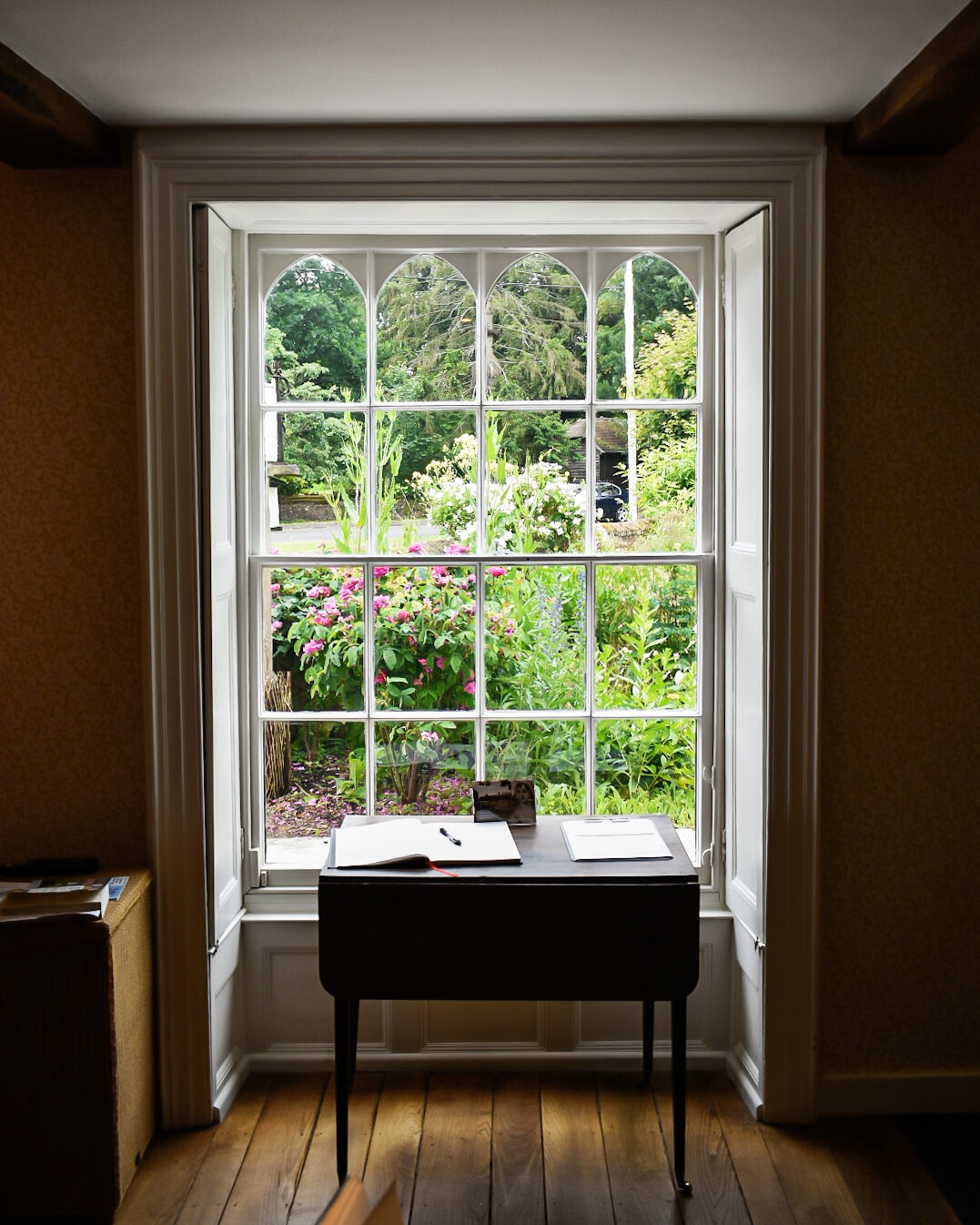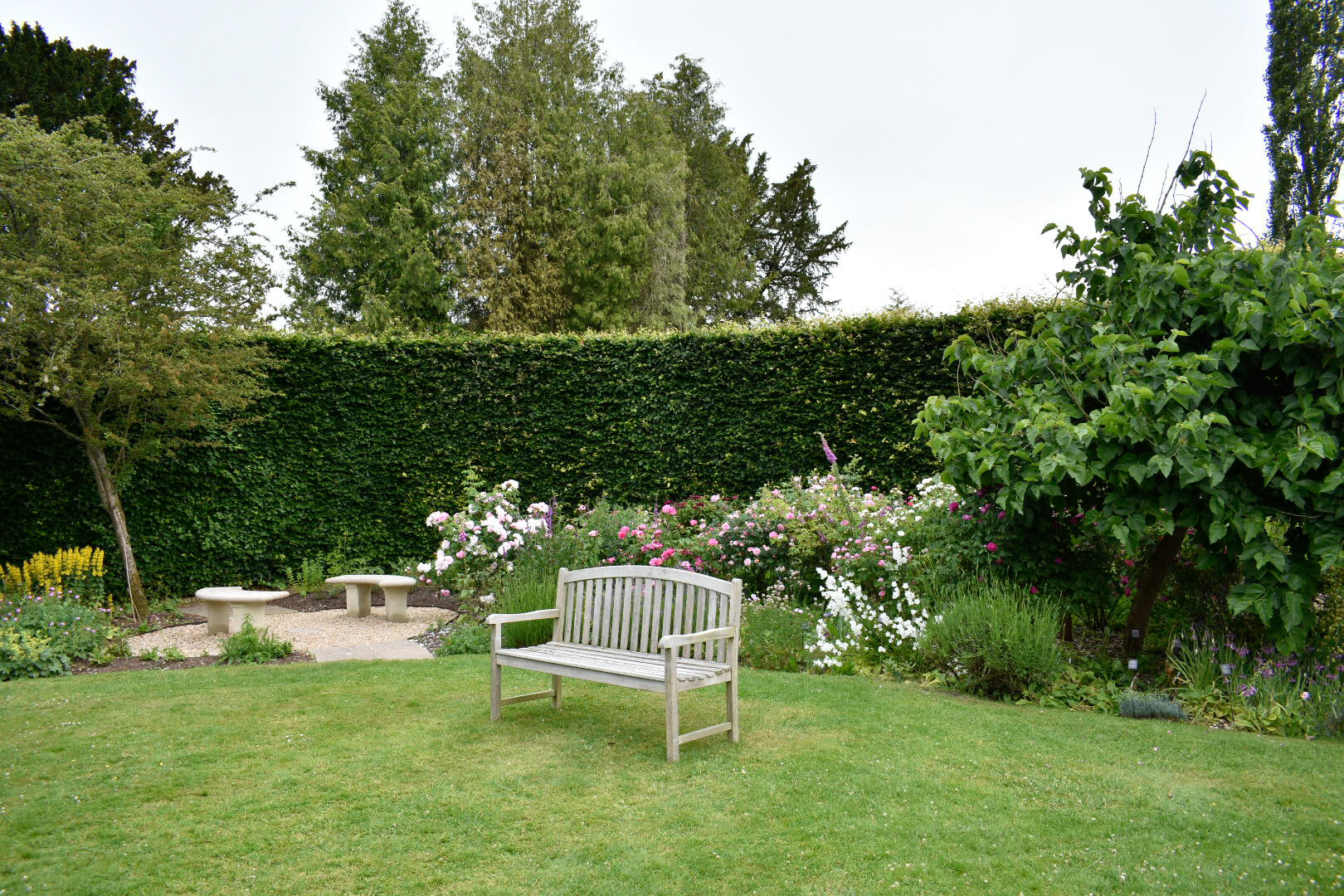During the summer we paid a visit to Chawton Cottage, the house in Hampshire that Jane Austen moved to in 1809, and where she lived for the last eight years of her life. I’d always meant to write about it on here, because it was a wonderful experience for an Austen-lover like me, and the recent coronavirus lockdown has really brought home to me how very circumscribed the lives of women have been throughout most of history — confined mainly to their homes and villages and with only their immediate family and relatively small social circles around them. And it’s some comfort to think that confinement (and boredom!) can sometimes give rise to creativity, as it did for Jane Austen (even if in my own case the endless meal planning and preparation and childcare and homeschooling doesn’t seem to have resulted in a surge of creativity — yet!).
Before moving to Chawton, Jane Austen lived for 25 years at the rectory in Steventon where she was born, the youngest of six children. When her father retired in 1800, he moved his wife and their two daughters to rented accommodation in Bath, and her brother James inherited both the rectory and the living at Steventon.
Her father’s sudden death in 1805 meant that Jane, her sister Cassandra and their mother were effectively homeless, and spent several years either staying in rented houses or with friends and relatives. Only in 1809 did her brother Edward offer them the rent-free use of Chawton Cottage, part of an estate he had inherited along with the much grander Chawton House nearby, an Elizabethan house now run as a museum.
During her more unsettled living circumstances in the early 1800s, Jane Austen did not produce much in the way of manuscripts, unlike the 1790s, when she drafted three of her novels: Northanger Abbey (published 1818), Pride and Prejudice (published 1813), and Sense and Sensibility (published 1811). It is impossible to know to what degree her reduced output was due to unhappiness (or perhaps what we would now call depression), and how much to the more socially demanding life she must have led whilst staying in Bath and as a guest of various family members.
What we do know is that after she moved to Chawton, she produced three more manuscripts: Mansfield Park (published 1814), Emma (published 1816), and Persuasion (published posthumously in 1818) and revised the drafts of her earlier novels, which she now saw published.
The rectory in Steventon was demolished in the early 1800s, and so the house at Chawton is a wonderful resource for understanding more about Jane Austen’s domestic life. The cottage is a 17th century house situated at the crossroads leading into Chawton village (it was at one time used as an inn).
During Jane Austen’s time the gardens would have included a kitchen garden and orchard, and you can still see the bakehouse and kitchen, and the bedroom Jane shared with her sister Cassandra.
A number of Jane's personal belongings are on display in the house, including jewellery, a quilt she made herself, and the surprisingly small writing table at which she is thought to have worked.
Jane Austen’s writing desk — grandfather clock for scale!
For any Austen fans, the house and the village of Chawton are well worth a visit, and are within 1.5-2 hours drive of London so can be easily visited as a day trip.




















